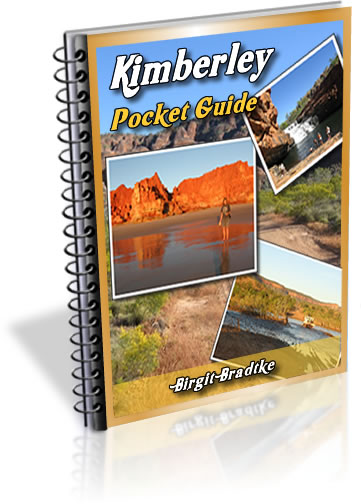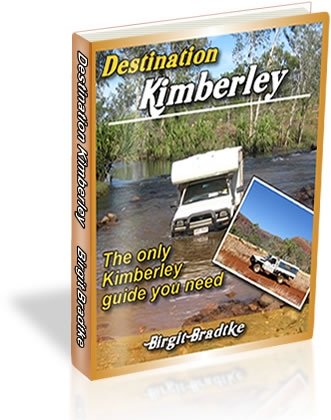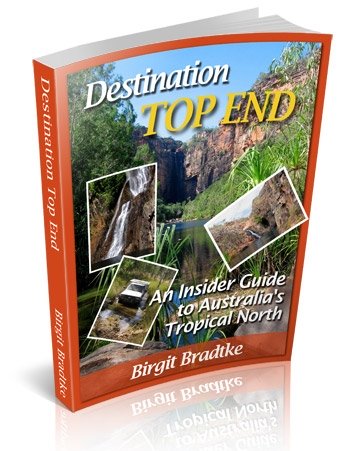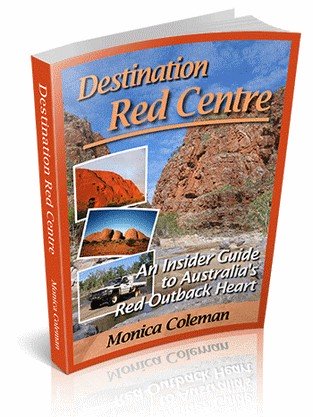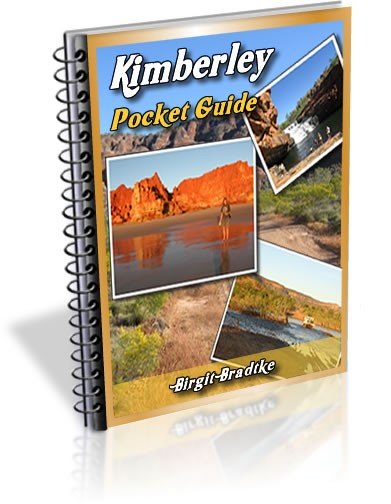Gibb River Road Conditions
Is a 4WD really needed? Do you need 4WD experience?
The Gibb River Road conditions have a bad reputation. The trip is often portrayed as a rough and challenging drive.
Four wheel driving the Gibb River Road is a big adventure for most Kimberley travellers.
Especially people without 4WD experience are often nervous about tackling it. Some even skip it altogether, thinking for 4WD experience is an essential requirement for the Gibb.
It isn't! You do not need any 4WD experience to drive the Gibb. The Gibb River Road is nowhere near as rough as it used to be...
General Gibb River Road Conditions
The western half of the Gibb River Road is usually in excellent condition, big parts are already sealed. There are bridges over some creeks, other creek crossings have been reinforced with concrete.
All the sections where the road climbs over steep ranges are now sealed, so you don't get the bad wet season wash outs that you used to get in the past.
Update: This is now also true for the eastern half! A lot of work has been carried out in recent years, corners have been taken out, most floodways and creeks have proper crossings, there is bitumen on the hills, and just like on the western end, the bitumen extends quite some way from the highway turn off. (To Kimberley Diamond Mine on the western end, and to ELQ turn-off in the east.)
Also, all of the road is well sign posted. You couldn't get lost if you tried! This is by no means the remote and challenging adventure it used to be.
Here is a picture. Does that look like a scary drive?
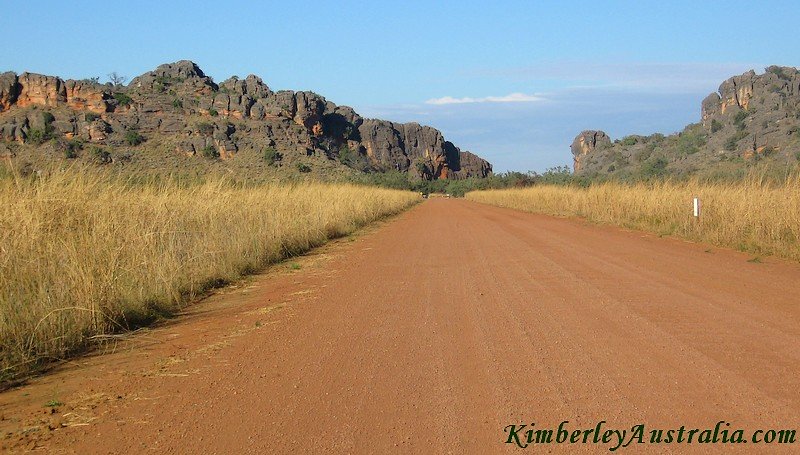 A section of the western part of the Gibb
A section of the western part of the Gibb
That is a very typical photo of what the conditions on the Gibb River Road mostly look like. The "track" is a actually a formed gravel road, comfortably wide and reasonably smooth.
Given, some of the side tracks are a bit rougher, and over the season the road deteriorates because it is used so heavily.
The conditions on any given day depend on the time of the year, when exactly a section has last been graded and how many people have used it since.
The road gets graded at the beginning of the season, as soon as the graders can get in. If the grader has just been through you will find a perfect highway.
Then the road slowly deteriorates, which means corrugations develop. When it gets too bad the graders will come through again. Usually those maintenance grades happen twice a year but there is no way to predict when.
If you happen to travel through just before another grade is due, then you may find a badly corrugated road. That can make the drive very uncomfortable but it isn't difficult. It just means you need to slow down.
If you are in too much of a rush it can rattle your van or trailer to bits. Driving too fast can also be dangerous (around corners or if you need to swerve) because you have a lot less traction on such a surface.
Slow down according to the road conditions and you will have no problems at all.
Do you really need a 4WD for the Gibb River Road?
A 4WD vehicle used to be an essential requirement because you needed the high clearance for the more uneven side tracks and the river and creek crossings. But all those are improving, too.
During the main tourist season and after, in other words, once all the creek and river crossings are very low or dry, you can negotiate the Gibb River Road and the tracks to the main attractions in a 2WD vehicle.
It is not something I would recommend to inexperienced drivers. Because of the very low clearance of 2WD vehicles you do run a risk of severely damaging the underside of your car in one of the crossings. But if you are used to driving a 2WD off the road you should get through without major problems.
Clearance really is the only issue here. Most Gibb River Road travellers will never need the actual 4WD itself.
Gibb River Road conditions at the start of the season
The start of the season is a different story. When the Gibb River Road first opens there is still a lot of water in the main river crossings and some of the creeks on the side tracks can also be very deep. In the first few weeks you may need to be able to drive through more than 500 mm of water.
At the start of the season 2WD is therefore totally out of the question. So are the smaller toy 4WDs that have lower air intakes. For such an early trip even big 4WDs need a snorkel.
There is no way to predict water levels ahead. If you plan to travel in April/May, for smaller cars and 2WD even June, then you need to keep an eye on the current conditions on the Gibb.
(You can do that here and here. Many more links to check weather forecasts, recent rainfall, river conditions as well as phone numbers for national park rangers, stations etc. are included in the appendix of Destination Kimberley.)
Do you need experience to cross any deep river on the Gibb in a 4WD? It's not essential, not for the crossings you'll encounter on an average Gibb River Road trip (including side tracks to attractions). But you do need to know how much water your vehicle can handle, and you do need to know how to engage the low range gears and the 4WD.
Besides water crossings there are a few more things you need to know when travelling the Gibb River Road and I talk about them on the next page. (On that page I also tell you more about how to cross deep water in your car.)
The main point to take away is that all you need is the necessary information and some common sense. There is nothing about the Gibb River Road that requires 4WD experience.
But what if something goes wrong?
The Gibb River Road is not as remote as it used to be.
Over the last years the trip has become very popular with Kimberley travellers and as a result the Gibb is rather busy.
During the season a steady stream of four wheel drives and campervans makes its way along the dusty track. The campgrounds fill up quickly, you need to arrive early if you want a nice spot. Supplies and accommodation are available at several points along the way. So are fuel, tyre and mechanical repairs.
Here is a route description that tells you about all those services and where they are:
Gibb River Road, WA: Derby to Kununurra
If you run into trouble, whatever kind of trouble that may be, there will be help. If you are nervous about a river crossing, you just wait for the next car. You'll never be alone.
So you really don't need to worry about this trip. Anyone can do it.
Convinced? Then find out what else you need to know when travelling the Gibb River Road.
Return to Gibb River Road main page.
Travelling to the Kimberley?
The FREE Kimberley Pocket Guide
A great introduction to travel in the Kimberley region and along the Gibb. This free resource will answer all the questions you might have in the early stages of planning a trip.
Destination Kimberley
The full Kimberley travel guide shows you how to make the most of your adventure at Australia's last frontier. Destination Kimberley includes the most detailed and most current guide to the Gibb River Road available anywhere. Also called "The Bible" by its readers.
Travelling to the Northern Territory?
Destination Top End offers the same comprehensive, detailed insider information for the tropical regions of the Northern Territory. Be the best informed traveller in the Kakadu, Litchfield and Katherine Gorge national parks and beyond!
A must have if you travel to or from Darwin.
NEW! Destination Red Centre is the latest addition in this popular series. Monica Coleman takes you through Australia's red Outback heart, offering all the detail and insider tips that you have come to know and love about our guides. With special emphasis on Aboriginal communities and culture.
A must have if you travel to or from Alice Springs/Uluru.
Return to Gibb River Road main page.
